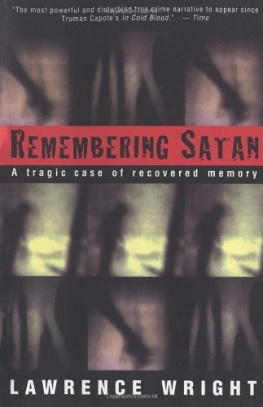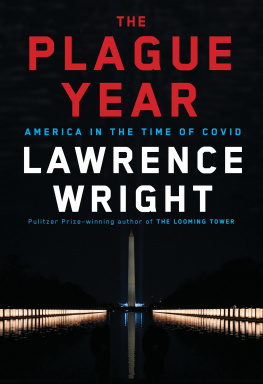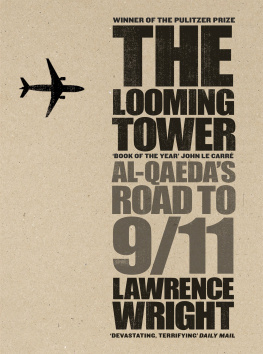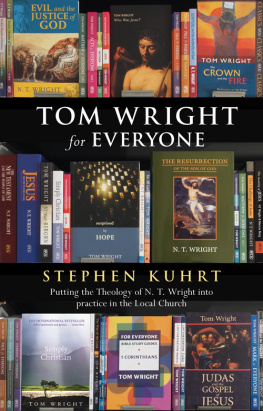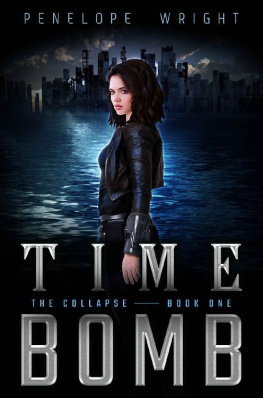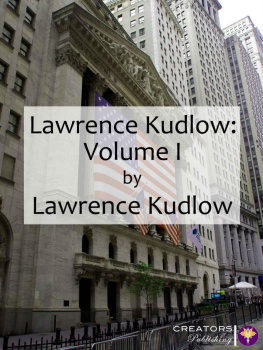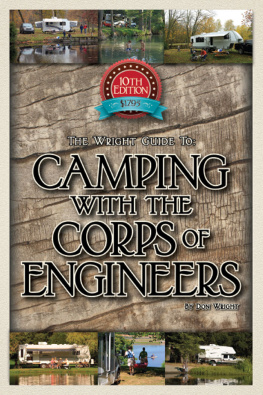Lawrence Wright - Going Clear
Here you can read online Lawrence Wright - Going Clear full text of the book (entire story) in english for free. Download pdf and epub, get meaning, cover and reviews about this ebook. year: 2013, publisher: Knopf Doubleday Publishing Group, genre: Religion. Description of the work, (preface) as well as reviews are available. Best literature library LitArk.com created for fans of good reading and offers a wide selection of genres:
Romance novel
Science fiction
Adventure
Detective
Science
History
Home and family
Prose
Art
Politics
Computer
Non-fiction
Religion
Business
Children
Humor
Choose a favorite category and find really read worthwhile books. Enjoy immersion in the world of imagination, feel the emotions of the characters or learn something new for yourself, make an fascinating discovery.

- Book:Going Clear
- Author:
- Publisher:Knopf Doubleday Publishing Group
- Genre:
- Year:2013
- Rating:5 / 5
- Favourites:Add to favourites
- Your mark:
- 100
- 1
- 2
- 3
- 4
- 5
Going Clear: summary, description and annotation
We offer to read an annotation, description, summary or preface (depends on what the author of the book "Going Clear" wrote himself). If you haven't found the necessary information about the book — write in the comments, we will try to find it.
Going Clear — read online for free the complete book (whole text) full work
Below is the text of the book, divided by pages. System saving the place of the last page read, allows you to conveniently read the book "Going Clear" online for free, without having to search again every time where you left off. Put a bookmark, and you can go to the page where you finished reading at any time.
Font size:
Interval:
Bookmark:
Compared with other religions I have written about, the published literature on Scientology is impoverished and clouded by bogus assertions. Some crucial details one would want to know about the church have been withheldfor instance, the number of people who are members of the International Association of Scientologists, which would be the best guide to knowing the true dimensions of the churchs membership. The church promised to provide an organizational chart, but never did so; in any case, it would have been more notional than actual in terms of the flow of authority and responsibility, since many of the churchs executive hierarchy have been quarantined for years in the Hole at the direction of the only individual who controls the institution.
L. Ron Hubbards extensiveindeed, record-breakingpublished works form the core of the documentary material that this book draws upon. Hubbard expressed himself variously in books, articles, bulletins, letters, lectures, and journals; one cannot understand the man or the organization he created without examining his work in each of these media. The church has published a useful compendium of Hubbards thought in What Is Scientology? Although the church employs a full-time Hubbard biographer and has commissioned several comprehensive works in the past, there is still no authorized account of Hubbards life. One of the previous Hubbard biographers, Omar Garrison, did write a full-scale account of Hubbards life, which was suppressed. The church has published a series of Ron magazines, which have been compiled as a highly selective encyclopedia. For years, the church has been mopping up other documentsjournals, letters, photographsand withholding them from public view, which makes it difficult for independent researchers to fill in blanks in the historical record.
There are several important repositories of information that I have used in this book, however: the Manuscript Division of the Library of Congress; the Heinlein Prize Trust and the UC Santa Cruz Archives; the Kenneth Spencer Research Library of the University of Kansas; and the National Personnel Records Center in St. Louis, Missouri. The Stephen A. Kent Collection on Alternative Religions, University of Alberta, Edmonton, Alberta, Canada, houses an important collection of Scientology material, and Professor Kent graciously allowed my assistant, Lauren Wolf, to work in his archive. In addition to being an endless source of memories on the history of the church, Karen de la Carriere made her extensive photographic archive available. Many thanks to these valuable resources for their cooperation.
There are three major unauthorized biographies of L. Ron Hubbard: Russell Millers excellent Bare-Faced Messiah (1987) was the first in-depth look at the man. Scientology unsuccessfully sued Miller, a British journalist, who says that while researching his book he was spied upon, his phone was tapped, and efforts were made to frame him for a murder he did not commit. Soon thereafter, Bent Corydons L. Ron Hubbard: Messiah or Madman? (1987) appeared, followed by Jon Atacks A Piece of Blue Sky (1990). The church attempts to discredit both of these authors because they are former Scientologists who the church says were expelled from the organization. It is notable that no comprehensive biography of Hubbard has been attempted since the churchs campaign against these books.
The scarcity of academic work on the church and its leaders testifies to the caution with which scholars regard the subject, as well as the reluctance of the organization to divulge information about its members, beliefs, and inner workings to qualified social scientists. In 1976, Roy Wallis published The Road to Total Freedom: A Sociological Analysis of Scientology, the first significant academic study of the church. While he was researching his book, Wallis was spied upon, and forged letters were sent to his colleagues and employers implicating him in a homosexual relationship. Renunciation and Reformulation: A Study of Conversion in an American Sect, an insightful book by Harriet Whitehead, an anthropologist, appeared in 1987. Since then, contributions from the academy have been meager. At this point, I should also acknowledge the work of Hugh Urban, at Ohio State University, David S. Touretzky at Carnegie Mellon University, and Stephen Kent, at the University of Alberta. Each of these scholars has produced important contributions to the understanding of Scientology, despite the obstacles and threats posed by the church.
Court documents contain a valuable record of the history and culture of the church and its founder; this is especially true of the landmark 1991 suit Church of Scientology California vs. Gerald Armstrong. David Miscavige has been shy about giving interviews, but he has provided testimony and declarations in several lawsuits, most extensively in 1990, in Bent Corydon v. Church of Scientology.
A handful of courageous journalists have provided much of the essential information available about the culture of Scientology. Paulette Cooper opened the door with her 1971 expos, The Scandal of Scientology. I have outlined in this book some of the harassment that she endured. Joel Sappell and Robert W. Welkos of the Los Angeles Times did a remarkable six-part series in 1990. Richard Leiby has been writing about Scientology since the early 1980s, first for the Clearwater Sun and subsequently for the Washington Post. Richard Behar covered the subject in Barrons and most notably in his 1991 expos for Time, The Thriving Cult of Greed and Power. Janet Reitman had unparalleled access to the church for her 2006 Rolling Stone article, Inside Scientology, which became a book of the same title in 2011. Chris Owen, an independent researcher, has written extensively about the church online, and has revealed much of the information available about Hubbards wartime experiences. Tom Smith has conducted a number of knowledgeable interviews on his radio show, The Edge, broadcast by Hillsborough Community College in Tampa, Florida. Joe Childs and Thomas C. Tobin of the Tampa Bay Times (formerly the St. Petersburg Times) have written groundbreaking stories, especially about the abuse inside the church hierarchy. Tony Ortega has been writing about Scientology since 1995, for the Phoenix New Times, and he continued as a valuable resource in the pages and the blog of the Village Voice until his recent resignation. Several of these journalists have been harassed, investigated, sued, or threatened in various ways. I am the beneficiary of their skill and persistence.
In the last decade, defectors from the Sea Org have provided a rich trove of personal accounts. These have taken the form of memoirs and blog postings, and they have accumulated into an immense indictment of the inner workings of the church. Among the memoirs I should single out are Marc Headleys Blown for Good: Behind the Iron Curtain of Scientology (2009); Nancy Manys My Billion Year Contract (2009); Amy Scobees Abuse at the Top (2010); and Jefferson Hawkinss Counterfeit Dreams (2010). Kate Bornsteins A Queer and Pleasant Danger (2012) provides an especially interesting account of the Apollo days.
Websites devoted to challenging the church have proliferated, beginning with alt.religion.scientology in 1991. Some of the most active are Andreas Heldal-Lunds Operation Clambake at xenu.net; Steve Halls scientology-cult.com; Arnaldo Lermas lermanet.com, and the Ex Scientology Message Board, which is an online community for former members of the church, founded by Emma and now run by Mick Wenlock and Ethercat. Exscientologykids.org, started by Jenna Miscavige Hill, David Miscaviges niece, among others, played an important role in Paul Haggiss decision to leave the church. Although many of the postings on these websites are anonymous, they provide rich texture to a subculture that few outsiders can appreciate.
Font size:
Interval:
Bookmark:
Similar books «Going Clear»
Look at similar books to Going Clear. We have selected literature similar in name and meaning in the hope of providing readers with more options to find new, interesting, not yet read works.
Discussion, reviews of the book Going Clear and just readers' own opinions. Leave your comments, write what you think about the work, its meaning or the main characters. Specify what exactly you liked and what you didn't like, and why you think so.

